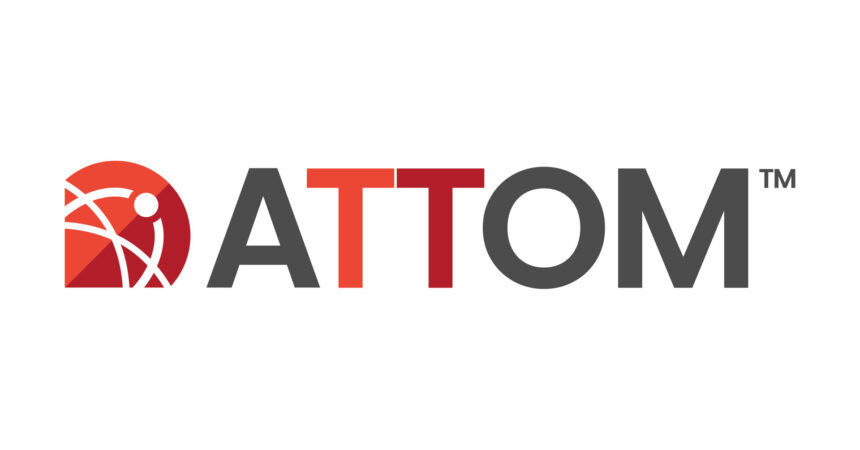Median Home Values Increase in More Than Half of Opportunity Zones Targeted for Economic Redevelopment; Price Trends Inside Those Zones Continue to Closely Follow National Market Patterns; Some Measures in Opportunity Zones Again Outpace Nationwide Improvements
IRVINE, Calif., Aug. 8, 2024 /PRNewswire/ — ATTOM, a leading curator of land, property, and real estate data, today released its second-quarter 2024 report analyzing qualified low-income Opportunity Zones targeted by Congress for economic redevelopment in the Tax Cuts and Jobs Act of 2017 (see full methodology below). In this report, ATTOM looked at 3,904 zones around the United States with sufficient data to analyze, meaning they had at least five home sales in the second quarter of 2024.
The report found that median single-family home and condo prices increased from the first quarter of 2024 to the second quarter of 2024 in 61 percent of Opportunity Zones around the country with enough data to measure. They were up annually in 62 percent of the zones analyzed.
Amid a nationwide price surge during the annual Springtime home buying season, median prices inside nearly half of the zones analyzed shot up more than 10 percent quarterly and annually.
Those trends, in and around low-income neighborhoods where the federal government offers tax breaks to spur economic revival, continued a long-term pattern of home values inside Opportunity Zones moving parallel to broader nationwide shifts for at least the last three years. That pattern has remained in place regardless of whether prices have surged, grown modestly or ticked downward.
The second-quarter price spikes were mixed, raising fortunes more so in higher-priced Opportunity Zones, while benefiting fewer of the very lowest-priced neighborhoods. Nevertheless, the broad picture remained one of ongoing economic strength, or limited weakness, inside some of the country’s most distressed communities compared to other markets around the country.
By a few measures, Opportunity Zones price trends even showed signs, yet again, of doing somewhat better than the nation as a whole during the second quarter of 2024. For example, increases in median home-values outpaced national gains in a slightly larger portion of zones than elsewhere.
“The trickle-down impact of the extended housing market boom across the U.S. continues to uplift many neighborhoods in need, revealing their economic potential,” said Rob Barber, CEO of ATTOM. “This pattern is especially evident in Opportunity Zones as house hunters priced out of more-expensive areas turn to places they can afford. While gains inside these zones vary, many are experiencing price increases, demonstrating the momentum necessary to attract the investments that the Opportunity Zone model is designed to generate.”
Opportunity Zones are defined in the Tax Act legislation as census tracts in or alongside low-income neighborhoods that meet various criteria for redevelopment in all 50 states, the District of Columbia and U.S. territories. Census tracts, as defined by the U.S. Census Bureau, cover areas that have 1,200 to 8,000 residents, with an average of about 4,000 people.
Amid economic limitations, most Opportunity Zones still had typical home values that fell well below those in other markets around the nation in the second quarter of 2024. Median second-quarter prices inside 80 percent of the zones were less the U.S. median of $365,000. That was about the same portion as in earlier periods over the past three years. In addition, median prices remained under $200,000 in almost half the zones.
High-level findings from the report:
- Median prices of single-family homes and condos increased from the first to the second quarter of 2024 in 1,932 (61 percent) of the Opportunity Zones around the U.S. with sufficient data to analyze, while staying the same or decreasing in 39 percent. Measured annually, medians remained up from the second quarter of 2023 to the same period this year in 2,140 (62 percent) of those zones. (Among the 3,904 Opportunity Zones included in the report, 3,185 had enough data to generate usable median-price comparisons from the first to the second quarter of 2024; 3,456 had enough data to make comparisons between the second quarter of 2023 and the second quarter of 2024).
- Opportunity Zones did even better than the rest of the nation when comparing price changes to shifts in the national median home price. Median values in 45 percent of Opportunity Zones went up from the first to the second quarter of this year by more than the 9 percent annual gain nationwide. The same was true in slightly less – 41 percent – of local housing markets outside the zones. (A similar pattern emerged when comparing shifts in prices annually.)
- However, median prices were up quarterly and annually in only about 45 percent of Opportunity Zones where homes commonly sold for less than $125,000 during the second quarter of 2024. Prices climbed during that time frame in 60 percent to 66 percent of zones with higher home values.
- Among states that had at least 25 Opportunity Zones with enough data to analyze during the second quarter of 2024, the largest portions of zones where median prices increased quarterly were in Massachusetts (medians up from the first to the second quarter of 2024 in 73 percent of zones), Maryland (68 percent), Oregon (68 percent), New York (67 percent) and Virginia (65 percent). States where prices were up quarterly in the smallest portion of zones included Georgia (median prices up in 50 percent of zones), Louisiana (53 percent), Minnesota (56 percent), Kentucky (56 percent) and California (56 percent).
- States where median home values in Opportunity Zones remained up most often year over year included New Jersey (median prices up annually in 81 percent of zones), Nevada (79 percent), Ohio (73 percent), New Mexico (69 percent) and Virginia (69 percent).
- Of the 3,904 zones in the report, 1,148 (29 percent) had median prices below $150,000 in the second quarter of 2024. That was down from 34 percent of zones with sufficient data a year earlier and almost 60 percent five years ago. Another 647 zones (17 percent) had medians in the second quarter of this year ranging from $150,000 to $199,999.
- Median values in the second quarter of 2024 ranged from $200,000 to $299,999 in 23 percent of Opportunity Zones, while they topped the nationwide second-quarter median of $365,000 in just 20 percent.
- The Midwest continued in the second quarter of 2024 to have larger portions of the lowest-priced Opportunity Zone tracts. Median home prices were less than $175,000 in 61 percent of zones in the Midwest, followed by the Northeast (41 percent), the South (39 percent) and the West (5 percent).
Report methodology
The ATTOM Opportunity Zones analysis is based on home sales price data derived from recorded sales deeds. Statistics for previous quarters are revised when each new report is issued as more deed data becomes available. ATTOM’s analysis compared median home prices in census tracts designated as Opportunity Zones by the Internal Revenue Service. Except where noted, tracts were used for the analysis if they had at least five sales in the second quarter of 2024. Median household income data for tracts and counties comes from surveys taken the U.S. Census Bureau (www.census.gov) from 2018 through 2022. The list of designated Qualified Opportunity Zones is located at U.S. Department of the Treasury. Regions are based on designations by the Census Bureau. Hawaii and Alaska, which the bureau designates as part of the Pacific region, were included in the West region for this report.
Media Contact:
Megan Hunt
[email protected]
Data and Report Licensing:
[email protected]
SOURCE ATTOM











